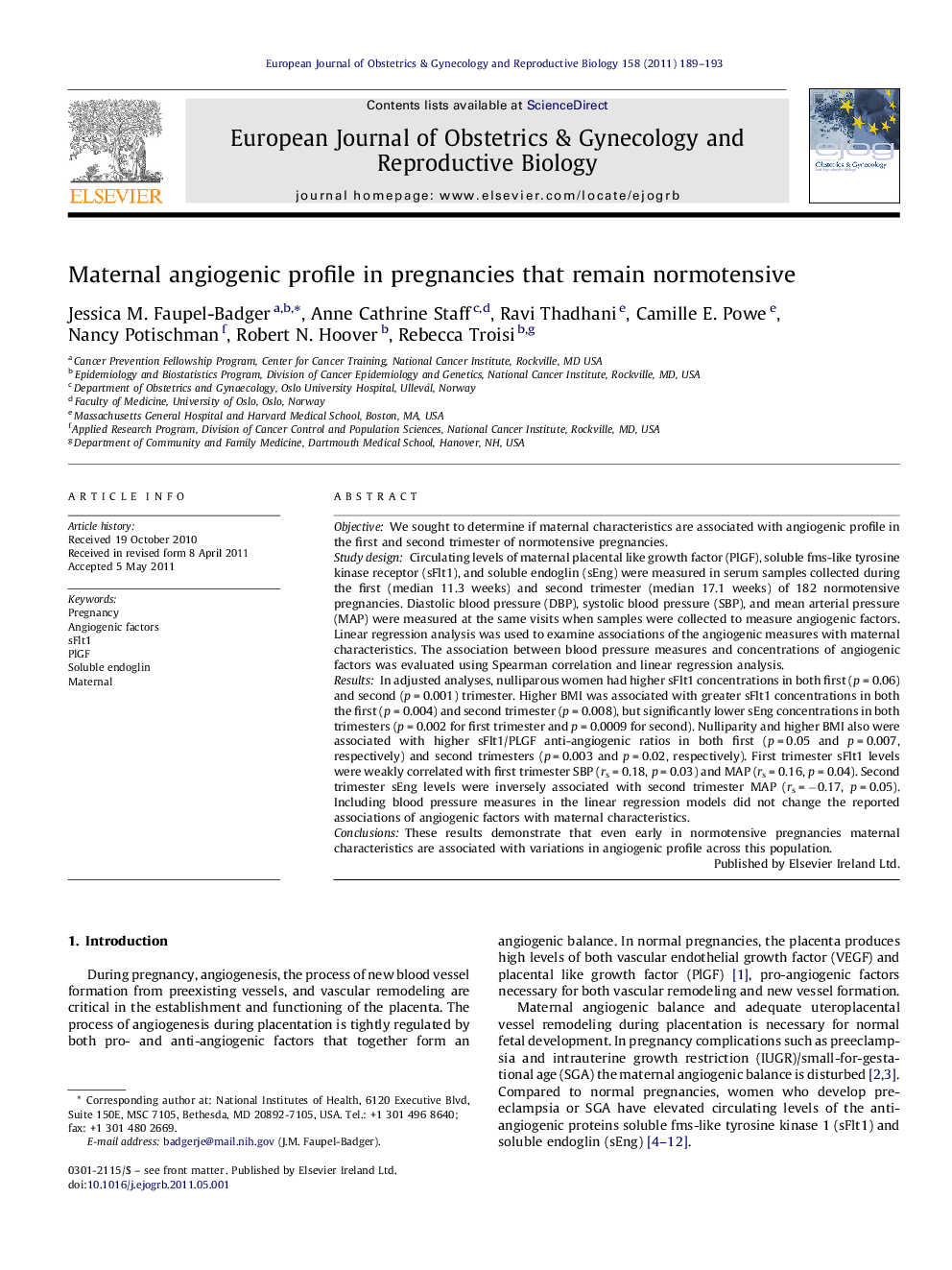| Article ID | Journal | Published Year | Pages | File Type |
|---|---|---|---|---|
| 3920370 | European Journal of Obstetrics & Gynecology and Reproductive Biology | 2011 | 5 Pages |
ObjectiveWe sought to determine if maternal characteristics are associated with angiogenic profile in the first and second trimester of normotensive pregnancies.Study designCirculating levels of maternal placental like growth factor (PlGF), soluble fms-like tyrosine kinase receptor (sFlt1), and soluble endoglin (sEng) were measured in serum samples collected during the first (median 11.3 weeks) and second trimester (median 17.1 weeks) of 182 normotensive pregnancies. Diastolic blood pressure (DBP), systolic blood pressure (SBP), and mean arterial pressure (MAP) were measured at the same visits when samples were collected to measure angiogenic factors. Linear regression analysis was used to examine associations of the angiogenic measures with maternal characteristics. The association between blood pressure measures and concentrations of angiogenic factors was evaluated using Spearman correlation and linear regression analysis.ResultsIn adjusted analyses, nulliparous women had higher sFlt1 concentrations in both first (p = 0.06) and second (p = 0.001) trimester. Higher BMI was associated with greater sFlt1 concentrations in both the first (p = 0.004) and second trimester (p = 0.008), but significantly lower sEng concentrations in both trimesters (p = 0.002 for first trimester and p = 0.0009 for second). Nulliparity and higher BMI also were associated with higher sFlt1/PLGF anti-angiogenic ratios in both first (p = 0.05 and p = 0.007, respectively) and second trimesters (p = 0.003 and p = 0.02, respectively). First trimester sFlt1 levels were weakly correlated with first trimester SBP (rs = 0.18, p = 0.03) and MAP (rs = 0.16, p = 0.04). Second trimester sEng levels were inversely associated with second trimester MAP (rs = −0.17, p = 0.05). Including blood pressure measures in the linear regression models did not change the reported associations of angiogenic factors with maternal characteristics.ConclusionsThese results demonstrate that even early in normotensive pregnancies maternal characteristics are associated with variations in angiogenic profile across this population.
